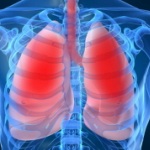 Model V. Henderson
Model V. Henderson

Virginia Henderson is a famous name in nursing. She is the author of the theory of nursing care.
The so-called additive-complementary nursing model of Henderson calls for directing the nurse's attention to helping the patient in his needs:
- physical, physiological;
- psychological;
- social.
Nursing theory and the Henderson model suggest that the nurse's actions should be aimed at the speedy recovery of the patient. The nurse adds her actions to the disturbed actions of the patient, complements them.
The 14 Needs of Everyday Life by Virginia Henderson
- Normal breathing.
- Sufficient food and fluid intake.
- Excretion of waste products from the body.
- Movement and maintenance of the desired body position.
- Rest and sleep.
- Ability to independently put on, take off and choose clothes.
- Maintaining body temperature, the ability and ability to dress according to climatic conditions.
- Compliance with body hygiene, care for appearance.
- Safety of the patient and his environment.
- The ability and ability to actively communicate.
- Possibility and ability to perform religious rites according to one's faith.
- Doing a job that brings satisfaction.
- Active recreation and entertainment.
- The pursuit of knowledge, the satisfaction of curiosity.
The Nursing Process and the Virginia Henderson Model: Applications
1. The patient is a person with fundamental needs both in a healthy state and during an illness.
2. The source of the patient's problems is the inability to take care of himself for reasons of childhood or old age, due to certain circumstances (long-term dying, being unconscious, recovery).
3. The goal of care is to achieve long-term goals aimed at meeting all 14 needs of the patient. Short-term goals are set by the nurse only when the patient's condition requires urgent action.
4. Direction of aid:
- discussing with the patient the terms of care for nursing examination;
- meeting the needs of the patient with his active assistance.
5. The Role of the Nurse:
- an independent medical worker caring for a patient;
- an average medical worker who reports to a doctor and performs medical appointments in order to quickly achieve the goal of restoring satisfaction of the patient's needs.
6. Methods of intervention - performing procedures prescribed by doctors, issuing and monitoring the intake of medications by the patient, involving the patient's family in the care.
7. Henderson proposes to evaluate the model only when all the needs of the patient are satisfied with the participation of a nurse.





